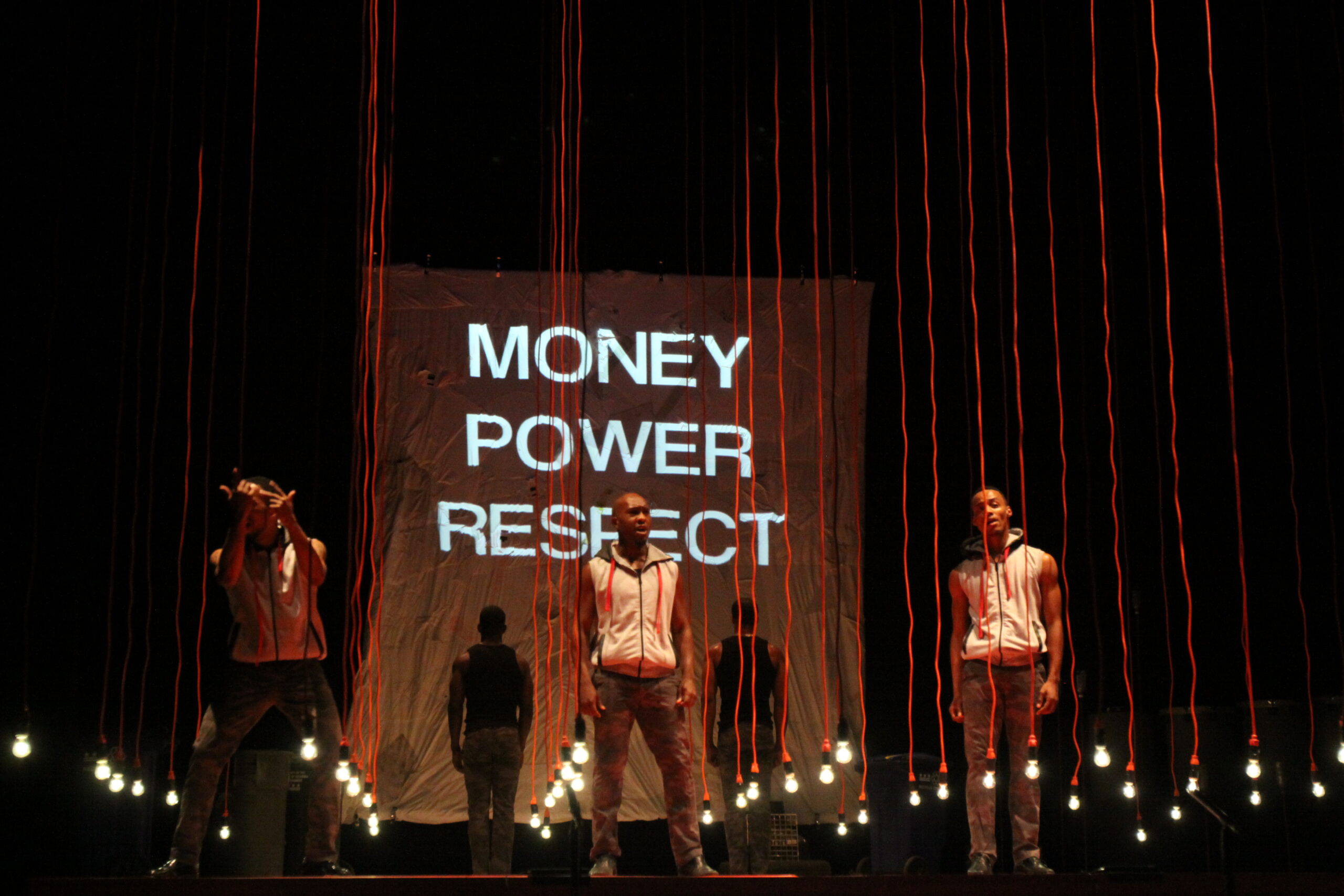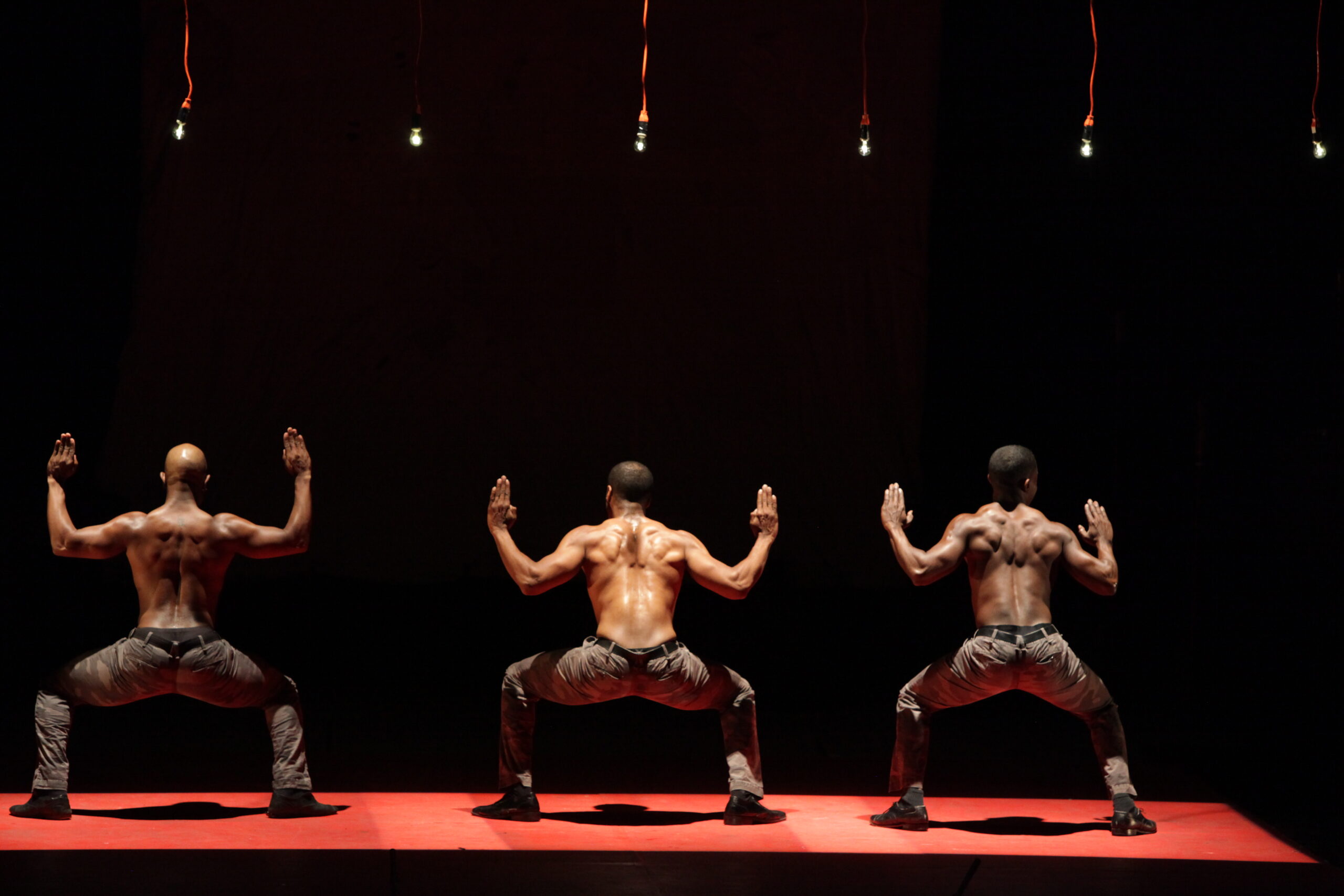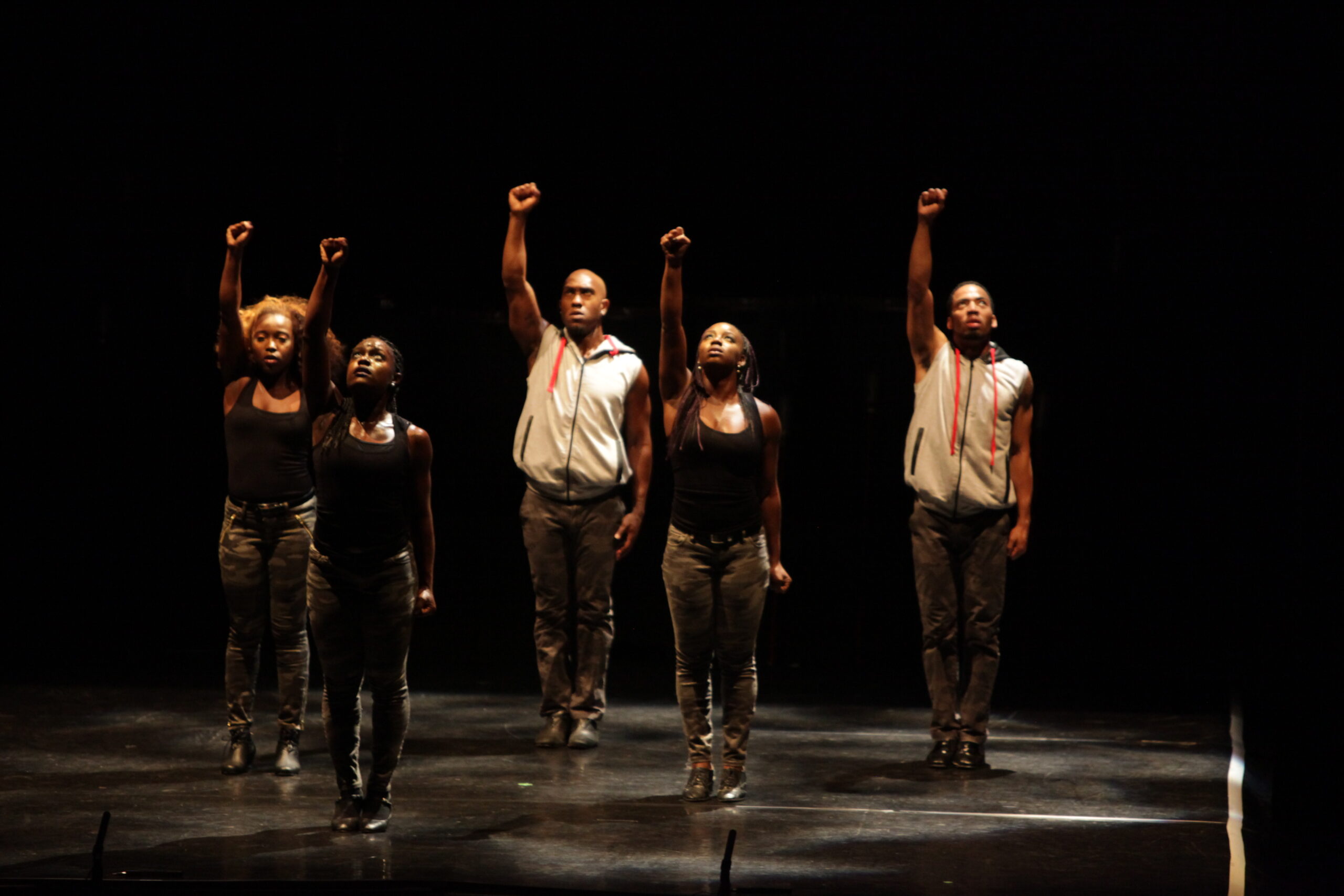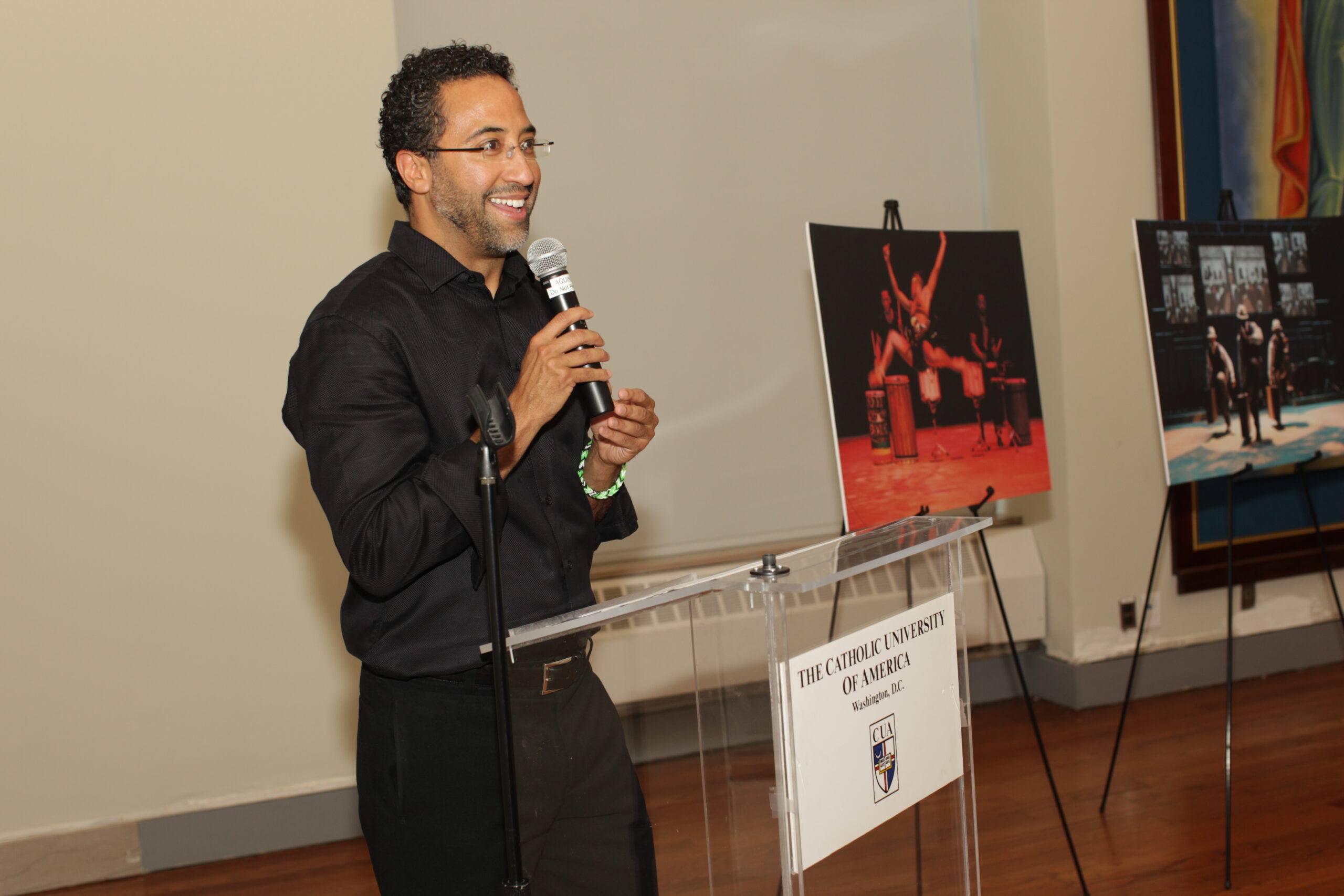What if we could take the energy of stepping, harness it, and reuse it to power devices and communities? Green is the New Black was created by Step Afrika! to explore, through the use of energy harvesting technology, our capacity to capture the “power” created through stepping and convert that power into electrical energy. Green is the New Black promoted concepts of sustainable energy and “climate care” through a performance that is powered by the energy of dance.
Step Afrika!: Green is the New Black – “[]n” (the nth power)
REVIEW BY CARMEL MORGAN FOR CRITICALDANCE, JUNE 7, 2014
If you don’t think of stepping as an art form, then you haven’t seen the work of Washington, DC’s largest African-American arts organization, Step Afrika!, which will soon celebrate its 20th anniversary season. Led by founder and executive director C. Brian Williams and artistic director/choreographer Jakari Sherman, the ten dancers of Step Afrika! expertly showed off the range of this unique American art form in a performance with an environmental theme and catchy title, “Green is the New Black.” The performance was green, such that there were no paper programs handed out. Instead, in my case, at least, a program and press kit were sent to my email address – a practice I’d love dance companies everywhere to adopt! Exemplifying another green aspect of the performance, the screen onto which images were projected was made from discarded white shirts sewn together, and it made a strikingly beautiful backdrop.
The first phase of “Green is the New Black,” a multiyear project, is called “[]n” (the nth power). The dancers explored power in all its forms, from electricity to the power of ideas and even the abuse of power. In their exploration, the dancers used not only stepping, but contemporary and African dance to convey their messages.
…
Among many esteemed patrons at the opening night performance was Supreme Court Justice Sonia Sotomayor, who clapped and swayed along with everyone else.
Sherman definitely excelled at presenting something different with his latest choreography. The dancing soared far beyond what one would see in a college stepping competition. The work began with a blend of spiritual and eerie music. Dancers with headdresses circled up and joyously recalled a simpler time when humans shared a greater connection to the earth. A dancer taking the role of “Electrification” spouted poetry about how being green isn’t really so new. Surely your grandmother urged you not to throw anything away, to fix what you broke, she mused.
In a particularly poignant section, a lone female dancer, clad in fishnet-like tatters that if you looked closely incorporated the hashtag symbol (excellent costume design by Katie Touart), mournfully walked among discarded trash. As she approached other dancers, they ignored her. Their eyes were glued to their glowing cell phones. I’ve never seen a chorus of fingers swiping at tiny individual screens look more lovely or haunting. Sadly, the lonely dancer’s desperate pleas about caring for our environment (recycle, reuse, repurpose) were not heard by those with whom she shared the stage, but her message to the audience was loud and clear.
Harvesting the power of dance is more than a cool idea, and in “Green is the New Black,” I witnessed this idea in action. Ingeniously, during parts of the performance the strength of the dancers’ percussive steps powered special lights, which lit up as their feet struck the floor of an elevated platform, while drum beats also caused certain lights to blaze in rhythm. Matthew McCormack, an MFA student at Towson University, took a bow at the conclusion of the evening for this important contribution. I’m eager to see where his research concerning human-generated power and immersive art can take the dance world.
Keeping in mind that “Green is the New Black,” is an ongoing 3-year project, I’d encourage Sherman, in coordination with McCormack, to push ahead with further experimentation regarding the use of kinetics to produce power. This was one of the most fascinating parts of the performance.
…
I very much appreciated the amazing artistry of the performers and the compelling concepts, though, and I look forward to seeing where “Green is the New Black” ends up.
Step Afrika’s performance in ‘Green is the New Black’ lights up the stage — literally
By Sarah Kaufman, May 30, 2014 at 2:52 p.m. EDT
Followers of Step Afrika know that the body-slapping, heavy-stomping group has energy to burn. On Thursday, its percussive power was put to the test. Just how much wattage could its 10 dancers crank out?
Enough to light up the stage, as was proved in “Green is the New Black,” a dance-theater piece that merged the art of stepping with piezoelectric technology. Essentially, that’s a way to harvest the energy of human movement, with sensors on a specially engineered floor surface that capture the force of the dancing. The dance steps produce an electrical charge, which is harvested by the piezoelectric surface, and presto-bingo, it’s converted into power that fires the lights above the stage. The stronger the dancing, the stronger the power.
With me so far? Okay, enough physics. Glossing over the particulars, let’s just say that the stepping was amazing and so were the flashes of light slicing through Catholic University’s Hartke Theater. It was a simple and elegant equation.
“Somewhere between science and possibility” is how one of the dancers phrased it — spoken word was part of the show — and that’s an apt description. “Green is the New Black,” which continues through Sunday, features what Step Afrika’s founder and executive director, C. Brian Willams, called the first energy-harvesting step platform. That’s the science part, and it worked.
As for the artistic possibilities, the troupe needs a little more R&D. The show is episodic, with monologues alternating with stepping — that is to say, the rhythmic, full-bodied dance form practiced by historically African American fraternities and sororities. But the momentum was too easily dropped as one section ended and another began.
“Green is the New Black,” presented by Dance Place and Washington Performing Arts, is a work in progress, part of a three-year project to explore various uses of power: the power of words, of conservation and green technology, of the human mind and body. Sounds well-intentioned, and that is the effect of this show: earnest and a little didactic. The creators need to think about their audience. Is this a science-is-fun lesson for young folks or a more sophisticated experimental work for adults? The tone wavered.
In keeping with the green theme, the set made use of recycled goods. The backdrop was sewn from old T-shirts, and the stage was strewn with milk crates, boxes, an old sink, and spray-painted signs urging us to reduce consumption and “recognize your power.” It was good to see a dance performance with set design, but this felt a bit like “Sesame Street.”
The staying power was in the kinetic output, with or without the special platform; just boots, bodies and a whole lot of sound. At the end, the dancers swept the audience into a call-and-response clap-along, completing the electrical circuit that had started 90 minutes before. For that show of communal power, no technology was needed.

Be A Part of Our History
Founded in 1994 by C. Brian Williams, Step Afrika! is the first professional company dedicated to the tradition of stepping. Under Mr. Williams’ leadership, stepping has evolved into one of America’s cultural exports, touring more than 60 countries across the globe. To share your Step Afrika! story, visit stepafrika.org/about/. Step Afrika!'s 30th Anniversary Timeline is made possible by the generous funding of Bloomberg Philanthropies, with additional support from the Mellon Foundation and the DC Commission on the Arts and Humanities.
ATTEND A PERFORMANCE
Get TicketsSUPPORT OUR PROGRAMS
Donate NowSTEP AFRIKA! EDUCATION
Learn MoreLEARN ABOUT STEP AFRIKA!
Learn More
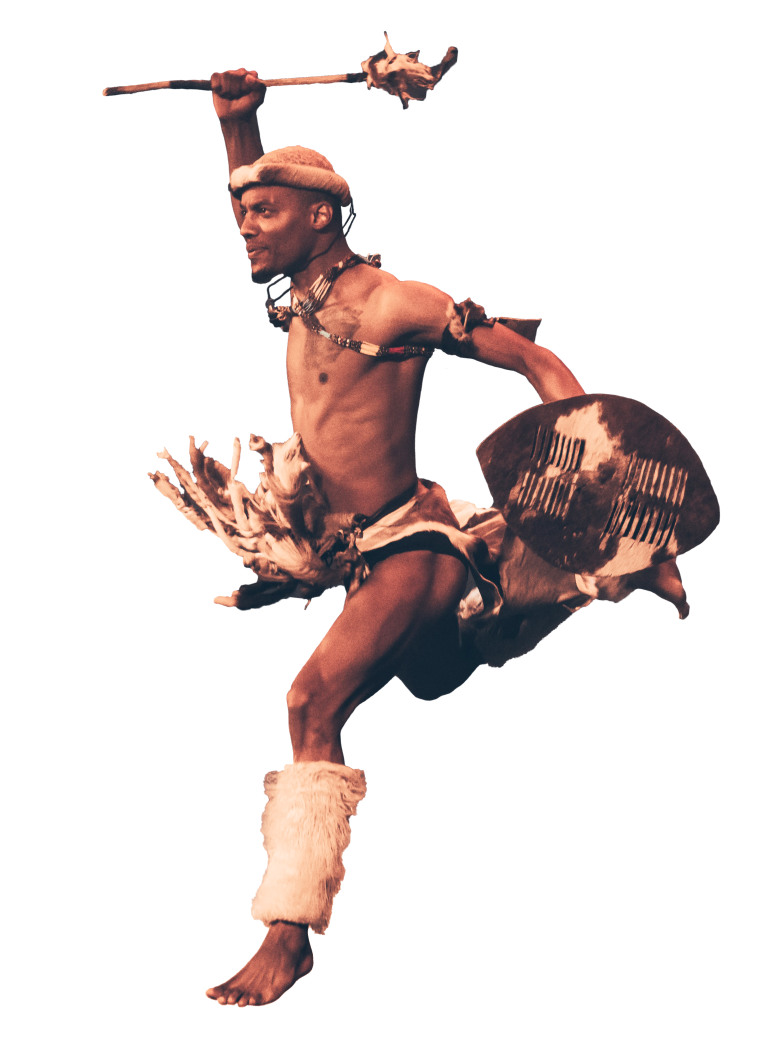
 Back to Timeline
Back to Timeline
 Previous Moment
Previous Moment